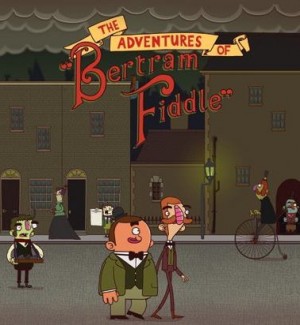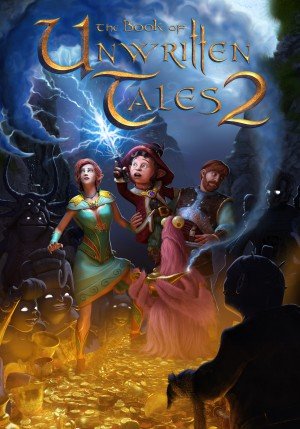Review for Epanalepsis

One of the less heralded adventure-type games funded through Kickstarter back in 2014, Epanalepsis is a solo production from Cameron Kunzelman, a chap who has previously published bite-sized games online for free. This new release retains the short length of its predecessors but is the first to come with a price tag attached. Unfortunately, while it’s laudable that one person has handled all aspects of the game’s development, the actual result is disengaging to the point of being boring. Perhaps Epanalepsis is meant to be esoteric in nature, but being cryptic isn’t enough when there’s no real plot to follow and not much of anything to do.
It’s too bad, because it starts out with such promise. The first couple of minutes are intriguingly atmospheric. You’re controlling a woman in her dreams, walking through a forest as the snow falls while she thinks about the selling of her childhood holiday home. Then the scene suddenly changes and a red-hooded figure appears, leaving behind a floating document that wakes Rachel when she touches it. The idea of dreams as a narrative device is always something I find interesting, so I had my hopes piqued at this point. Sadly, after this opening it all goes quickly downhill, resulting in the next hour spent progressing through a mundane story with dull dialogue and hoping it would end soon.
Epanalepsis takes place across three time periods: the 1990s, 2010s and 2030s. In each decade you take control of a different character, guiding them through a brief slice of their life. It’s all connected by the fact that the unnamed urban location is the same in each period, but the purpose of the buildings and their surroundings changes. For example, what is at first a dive bar later becomes a coffee house. The future is the most different, as everything is metallic and technology-reliant.
Exploring the relationship between multiple eras is a neat concept, but it isn’t successfully realised. Or, at least, it isn’t done in a compelling way. The change between the 1990s and 2010s isn’t distinctive enough – the furniture in the apartment has changed style and so have the shop signs on the street, but these minor cosmetic alterations are unremarkable. It might have been better to have a wider gap in time between the three acts, at least to make the stylistic changes more noteworthy.
As for what this means for the story itself… frankly, it’s beyond me. At first you take control of Rachel, the lady from the dream, getting her ready for the day by talking on the phone and showering and then going to the bar to meet someone. You then skip to Anthony, who’s playing a game with his friends before heading to the coffee shop to flog a dodgy computer drive. Finally, you’re a robot, on a mission to cause destruction. The sequences occur in proper chronological order, with no switching of characters or times.
This sounds varied enough, but it’s all pretty humdrum. Anthony’s section opens with you taking control of his in-game character, which is a cool idea, moving around the alien protagonist and collecting mushrooms to convince another player to join his team. But soon enough, the idea is abandoned in favour of a more straightforward day-in-the-life segment. For a game so ostensibly narrative-heavy, you’d think there would be more care taken with the actual tale than presenting a mundane snapshot of the three personalities involved, without even an overarching goal. You spend so little time with these protagonists, and waste it performing such tiresome actions, that it’s impossible to build any sort of connection with them.
At various points the three characters will all have an odd experience, similar to the one Rachel has in her dream. The problem is that it’s entirely nonsensical when it happens, due primarily to the awful dialogue. These scenarios are littered with speeches that just don’t mean anything. It’s like everything was written to sound sort of abstract and mysterious, without any consideration for comprehension or context. All I took away from it was that life loops and these characters will repeat these events forever… or something? It’s just baffling and I found myself increasingly frustrated by the whole thing. There’s possibly a grain of a good idea in there, but it’s definitely buried deep.
Operating with a combination of direct movement and a point-and-click control scheme, Epanalepsis is very basic in design. You use the directional arrows to move and left-click on characters you want to talk to or on the other limited hotspots available. There’s no voice acting, with dialogue popping up in black boxes that sometimes get cut off the screen. The minimalist design extends to the visuals, which consist of flat pixel art reminiscent of the late 1980s. It’s serviceable, but nothing beyond that, lacking any kind of sparkle that would bring some life to the world. The limited character animations are also weak – arms at their sides, mouthless and emotionless, all you get are dodgy walk cycles. There’s nothing inherently wrong with pixel art this rudimentary if serving an artistic purpose, but it needs to work all the harder to effectively convey emotion and meaning, and here it fails to do so.
There are no puzzles to speak of in Epanalepsis. At a couple of points you can select a dialogue choice, but it doesn’t seem to actually change anything. What you’re supposed to do next is signposted at every step, which amounts to clicking hotspots or picking things up. Having some sort of challenge might have been an improvement over what’s offered, because at least that would have elicited some engagement that the story itself lacks. To make matters worse, I often found that the hotspots took several clicks to register my input or required that I click around the actual object.
If there’s one good thing to take away from Epanalepsis, it’s the music from John Fio. It’s slow, haunting and quite unsettling at times. It’s got a nice melancholy feel to it too, with echoing strings establishing a moody quality that occasionally touches on an Arabian style. There’s also a jazzy street track which is fun to hear, especially when contrasted against the deceptively ominous music that accompanies the futuristic scenes.
Less an adventure game than a short story going nowhere fast, Epanalepsis is simply not fun, in any sense of the word. It’s a crying shame, because there are thematic seeds that could have been nurtured into a better game and story: invasion of dreams, repetition of life, and evolution of society. But they’re all handled so poorly, accompanied by such dire dialogue, that even taking no more than an hour it feels like a slog to get through. And slog through it you must, as you can save the game but there is no apparent way to exit without finishing. While the music is decent, it’s nowhere near enough to save the experience, particularly without even some puzzles to break the monotony. If you enjoy the occasional feeling of what-did-I-just-play? bewilderment, you may revel in this game’s abstraction. For all those looking for a retro-style or thought-provoking adventure, however, there are lots of good ones to choose from; Epanalepsis is not one of them.



























